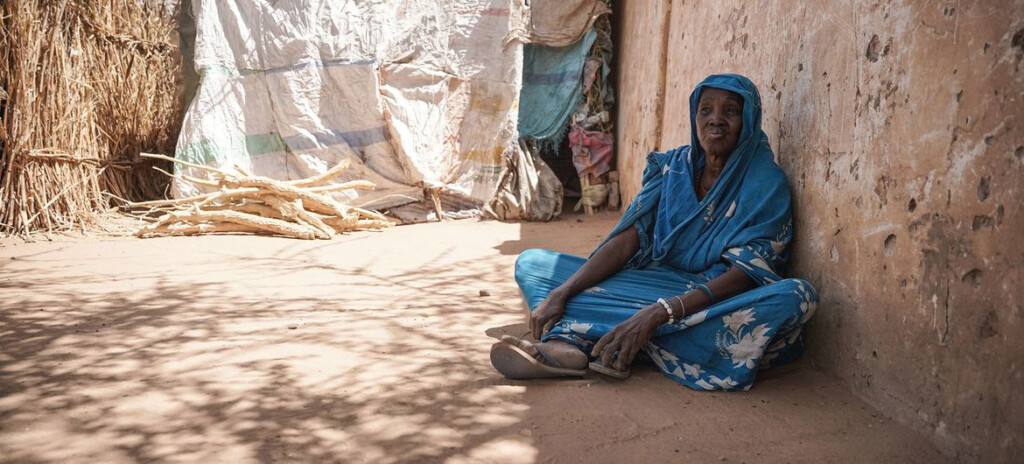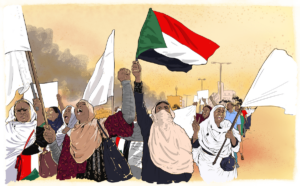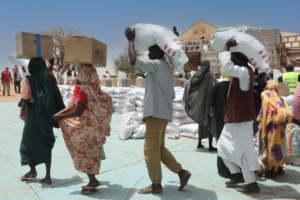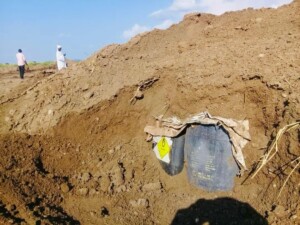IOM: ‘328k+ displaced from North Darfur capital in three months’

A woman who fled her home rests at a centre for displaced people in El Fasher, Darfur (File photo: Mohamed Zakaria / © UNICEF)
Approximately 328,981 people (65,933 families) were displaced from El Fasher locality over three months, from 1 April to 30 June. This includes those who had previously been displaced before the escalation of clashes in the city, according to the International Organization for Migration (IOM) Displacement Tracking Matrix (DTM).
Since 10 May, El Fasher has experienced an escalation in fighting between the Rapid Support Forces (RSF) and the Sudanese Armed Forces (SAF), along with SAF-allied rebel movements. MSF-supported hospitals have treated more than 1,781 war wounded, with 278 fatalities reported.
During April and May 2024, clashes across El Fasher led to displacement from the northern, eastern, and southeastern neighbourhoods to other areas within the locality. The matrix highlighted an increase in displacement to sites south of El Fasher and other states in Sudan during June.
According to the report, clashes in April displaced an estimated 40,615 people (8,123 families). These clashes occurred in rural villages in North Darfur, with most affected families relocating within El Fasher locality.
In May 2024, field teams reported 11 conflict incidents across El Fasher locality, displacing approximately 129,041 people (25,836 households). These clashes occurred in the northern and northeastern neighbourhoods of El Fasher city, leading to further displacement to southern areas of the locality.
In June 2024, field teams recorded 10 conflict incidents across North Darfur, displacing an estimated 159,325 people (31,974 households). Clashes in April and May were confined to the northern neighbourhoods, whereas in June, clashes were reported in the western and southern neighbourhoods of El Fasher.
Many private and public facilities were affected by the clashes, including the Abu Shouk camp for displaced people, the southern hospital, the Saudi hospital, schools, and other public buildings hosting displaced communities. Field teams also noted several cases of secondary and tertiary displacement to locations south of El Fasher locality due to ongoing clashes.
Escalation since January
North Darfur has been the epicentre of clashes since the conflict began on 15 April 2023. The DTM field teams have observed a sharp escalation in clashes and displacement since January, issuing 42 rapid alerts for early warning related to the conflict in North Darfur. This represents about 70 per cent of the total urgent alerts related to North Darfur since 15 April 2023.
El Fasher locality hosts approximately 737,896 internally displaced people (IDPs), accounting for about 51 per cent of the total IDPs in North Darfur. North Darfur has the second-highest number of internally displaced people in Sudan, with an estimated 1,488,364 people.
North Darfur is also one of the primary states of origin for IDPs, with an estimated 14 per cent of all IDPs in Sudan reportedly originating from there. Of these, an estimated 90 per cent are reportedly displaced within Northern Darfur.
IDP communities in North Darfur are primarily hosted in IDP camps (46 per cent), with host households and communities (27 per cent), gathering sites or open areas (16 per cent), and schools and public buildings (8 per cent). The matrix suggests that clashes and resulting displacement will continue within North Darfur, as well as to neighbouring states in Sudan and across borders to neighbouring countries.











 and then
and then